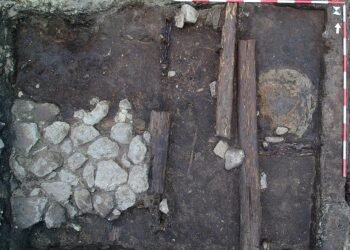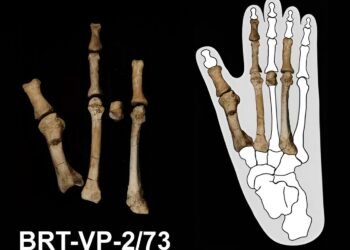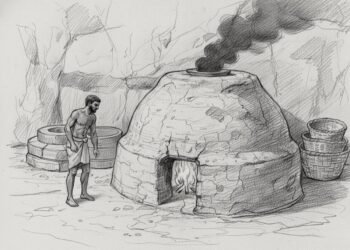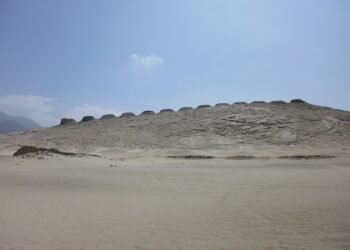A new study has illuminated the mysterious “dragon stones” of Armenia—the giant prehistoric monuments called vishaps locally—finally answering a question that has been intriguing researchers for over a century. Standing up to 18 feet high and weighing several tonnes, these carved stones, frequently fish-like or cow-hide-shaped, are found irregularly scattered throughout the Armenian Highlands. Long thought to have been part of a forgotten cult, new evidence now suggests that they were used in ancient water-linked rituals and early irrigation practices.

The research, conducted by Yerevan State University and the Institute of Archaeology and Ethnography researchers, analyzed 115 vishaps across the region. Published in npj Heritage Science, the study is the first statistical examination of the monuments, utilizing radiocarbon dating, spatial analysis, and precise measurements. The findings reveal that the stones were deliberately placed near springs, lakes, and prehistoric irrigation channels, suggesting that they were employed as sacred markers in a complex system of water management.
Dating to between 4200 and 4000 BCE, the dragon stones belong to the Chalcolithic era and are comparable to the earliest construction phases of other mega-sites such as Stonehenge. The researchers determined that the stones fall into two different groups. Fish-shaped stones are at higher elevations—at one point over 9,000 feet above sea level—close to natural water sources, while cow-hide-shaped examples are more common at mid-altitudes in valleys where water was being used for agriculture. This distribution pattern aligns closely with ancient irrigation zones, supporting theories proposed nearly a century ago.
The process of sourcing, carving, and transporting the stones was enormous. Most are made from local basalt or andesite, but some are more than four tonnes in weight. The biggest one, Karakap 3, was placed at a height of more than 9,100 feet, contradicting speculation that smaller monuments would be built in areas where snow-free working seasons were short. Rather, the builders embarked on transporting huge stones to high-altitude areas, an activity that had to be achieved through organized manpower, planning, and provision of supplies for laborers under harsh mountain conditions.

The deliberate placement of the monuments emphasized the symbolic and cultural importance prehistoric communities gave to water. By erecting these dragon stones at key points along natural water systems, the communities not only sanctified the land but also signaled a deep understanding of watershed management. The monuments were religious symbols as much as they were markers of critical resources, pointing to water’s role as a life-sustaining force.
Over time, the tradition of dragon stones continued and evolved. At sites such as Tirinkatar on Mount Aragats, with the largest known vishap concentration of twelve, later civilizations added their own layers of meaning. The Urartian Kingdom inscribed cuneiform on existing stones, and Christian communities carved crosses and religious motifs centuries later. This continuity speaks to the enduring spiritual importance of these sites across shifting cultural and religious landscapes.

Apart from their regional significance, the study brings new insight into prehistoric societies worldwide. By integrating vishaps with other high-altitude sacred landscapes, researchers argue that Armenian monuments depict a shared human desire to correlate monumental construction with cult practices that necessitate collective effort. The dragon stones are therefore not curiosities but reflect a sophisticated prehistoric worldview that revolved around water as the center of life and religion.
The research interprets the dragon stones not as haphazard relics but as evidence of an organized, highly symbolic tradition. To the people who carved and raised them six thousand years ago, such monuments were more than engineering achievements; they were sacred connections between mountains, water, and human life—a demonstration of the cultural imagination of Armenia’s earliest societies.
























The inscription on the stone is similar to Tamil letter OM and a bystander Peacock. Kindly get clarification from any Tamil linguistic authority in India.
Regards
R. sundara kumar
great